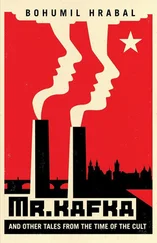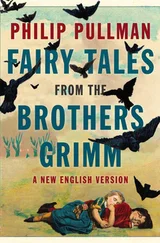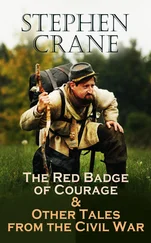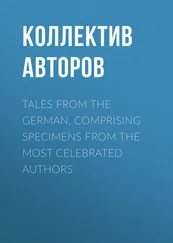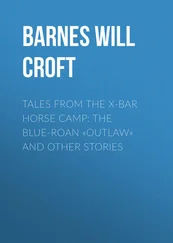The locations were chosen for their remoteness and the gruelling terrain. Physical training was one of the key elements of the training, including many marches over the rugged Scottish countryside. For reasons of security, nationalities were kept separate, but virtually all students followed the same courses. Days were long and sleep was often in short supply, as the instructors piled on the pressure and assessed the recruits’ ability to make decisions and think clearly under extreme duress.
The courses lasted for five weeks and included lessons in physical training, silent killing, weapons handling, demolition, field craft, navigation and signals. Weapons training was based on close-quarters combat, with two ex-Shanghai officers, William Fairbairn and Eric Anthony Sykes, teaching unarmed combat and silent killing. The two men gave their name to the FS fighting knife – a small knife used mainly by the Commandos – and the Fairbairn Fighting System, which was also taught to members of the CIA and FBI. The students learnt to master the Colt .45 and .38 and the Sten gun, a weapon regarded by many as being of dubious reliability. The recruits were taught the ‘double tap’ system of killing, firing two shots at a target, ideally the head, to ensure certain death.
Instructors also made use of the local train network, and trainees were given missions to ‘sabotage’ the West Highland Line using dummy explosives. Later in their training, the student agents also had to undertake a number of parachute jumps, six for men and five for women, at Ringway airport near Manchester.
Once these stages of training had been successfully mastered, agents moved to Beaulieu in Hampshire, the location of the Group B training school – ‘the final stop before they drop’, as some wag once observed.
Beaulieu was the perfect training school. It was located within the seclusion of the New Forest and the estate had numerous houses and outbuildings where students could perfect and hone their skills in relative secrecy. The training staff were housed in a central headquarters while the trainees were accommodated in a variety of different houses depending on their country sections.
Those destined for France were expected to know about all things French and adopt various customs, quirks and national idiosyncrasies, likewise for those being dispatched to Denmark, Belgium, Holland or other occupied countries. Each house had its own ‘house commandant’ whose job was to monitor and occasionally mentor the agents and keep them on the straight and narrow. The one golden rule was that the trainee agents only ever associated with members of their own house for reasons of security, which meant that the training staff would come to each of the houses to give lectures.
During the course of the war more than 3,000 agents went through Beaulieu, whose vast rambling estate was built around the ruins of Beaulieu Abbey, and whose centrepiece is Palace House, the imposing Gothic grey stone mansion which was still used by members of the Montagu family.
‘The gardener’s cottage where I lived was really two cottages back to back. When we lived there we were three plus the housekeeper. Whoever was sleeping in the other (smaller) cottage had to go out and in through the front door to go to bed at night. And the winters were cold! “The House in the Woods”, where the 25 officers lived – which had been a secret weekend rendezvous for Edward VIII and Mrs S. before he abdicated – was about ten minutes’ walk away from the cottage, across the forest.
‘In the middle of the estate was our HQ, a rather ugly stockbroker Tudor house called “The Rings”, which has since been demolished and replaced with an equally ugly modern bungalow. The students were billeted in various houses away from us. We couldn’t see their houses and they couldn’t see us. The women were housed in “The House on the Shore”, while the French students were mostly housed at “Boarman’s” or “The Orchard” or “The Vineyard”. The different nationalities were kept strictly apart, for security reasons. As were men and women – no unisex houses.’
The Beaulieu training houses were subdivided into five departments covering areas such as agent technique, clandestine life, personnel security, covert communication, cover story techniques and counter-surveillance. Agents were also taught how to change their appearance by using disguises. One of the instructors at the school, Peter Folis, who had trained as an actor, would often tell his students not to think ‘false beards’ but instead make small changes to the face such as wearing glasses, and part the hair differently.
‘I was a little disappointed to be leaving London, because it was the heart of everything, but Buck said to me, “I want you to go to Beaulieu,” so I just got on with it. I went home, packed my bags, got on a train and that was it. I was at Beaulieu. My new home was a gardener’s cottage on the estate and was shared by three of us: a South African FANY and a woman of about 35 who was very distinguished, and we had a splendid housekeeper who looked after us like a mother hen. It was a very gender segregated set-up, but that didn’t stop all sorts of secret romances taking place.
‘There was another house where 25 instructors were based, and they were mainly ex-agents. At first I didn’t really know why I had been sent to Beaulieu, but after a very short time it became clear that I was going to help to instruct the students or agents, and that was a very exciting prospect. The men and women attending the courses were known as “students” while training, “bods” when they were sent on a mission and reached the rank of human being – if they made it back. It was all sort of light-hearted, designed, I suppose, to remove some of the fear.
‘Kim Philby †had served as an instructor at Beaulieu for a short time and was very well liked. When I arrived he had already returned to London, but everyone spoke of him as being very charming, pleasant and efficient.
‘But Kim was recalled to London; maybe his superiors were already a little suspicious. Another of the trainers was Paul Dehn, who became an art and theatre critic, and there was another one called Jock who was always very nice to me. Socially the set-up was very public school. For example, the instructors changed into service dress or black tie for dinner, so it was a little bit stiff. But Jock was different. He was always dressed in battledress and hobnail boots. The days were long and all of the staff worked seven days a week, but we finished at 1pm on a Sunday. Jock would come to our cottage after lunch and would bang on the door and say, in a very thick Glaswegian accent, “Does anyone want to come for a walk?” There was always a twinkle in his eye. I would often go for a walk with him and he might try and get a bit romantic. One only had to say “Shift it, Jock” – he never insisted. But what I didn’t know at the time was that Jock was a specialist in silent killing. If I had known that at the time I’m not sure I would have had the courage to resist his advances.’
Noreen’s main duty at Beaulieu was to help in the training of agents in a role known as a ‘decoy’. All agents had to be able to follow targets and conduct close surveillance without being noticed. It was a specialist skill which took time to perfect. During the various exercises the student agents were ordered to follow Noreen and report on her movements, supposedly without being seen. The majority of the exercises took place in either Bournemouth or Southampton, the two large towns closest to Beaulieu.
‘On a particular training day, we were given a scenario and told to head to a particular landmark in either Southampton or Bournemouth. I always worked in Bournemouth, and the agents were told, “You will see a girl in a headscarf and a dirty macintosh and a shopping basket, and she’ll probably be wandering along in front of the pier at about 3pm: follow her and find out what she is up to.” The idea was for them to try and follow me, find out who I met, where I went shopping and whether I had any sort of routine – exactly the sort of thing they might have to do in France. But the trick for them was not to be seen by me, and that was a very difficult skill to master. It was obviously easier for me to spot them than for them to spot me. It was wartime and there were a lot of women about, and most of them had baskets, because as soon as a woman in wartime saw a queue she would join it, because a queue would usually mean fresh food. But there was a shortage of men of a certain age. Most men between the ages of 19 and 40 were serving in the forces, so people looked very strangely at a man who was dressed in civilian clothes who was in his twenties or thirties, and quite often the agents would get abuse hurled at them. People, especially women who might have sons or husbands serving overseas, would walk right up to them and say things like, “It’s disgusting, there’s a war on and there you are wandering around Bournemouth in the middle of the afternoon – you should be ashamed of yourself.”
Читать дальше

